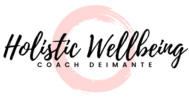The phrase “You look fine” is often said with kindness — a reassurance meant to comfort.
Yet, for many people living with chronic pain or invisible illness, those words can land heavily. They can highlight the gap between what others see and what is actually experienced beneath the surface.
Living with an invisible condition often involves navigating two simultaneous realities: the visible, outward life that others perceive, and the private, internal world shaped by symptoms, fatigue, and uncertainty. Over time, this constant negotiation can begin to influence not only how a person feels physically but also how they perceive themselves and relate to others.
Losing and Redefining Identity
Chronic pain can gradually reshape one’s sense of identity.
An individual may find themselves reflecting on who they were before their condition — someone with greater energy, spontaneity, or independence. This reflection can sometimes bring feelings of loss or frustration, even if those emotions remain unseen or unspoken.
However, identity is not fixed. It continues to evolve alongside our circumstances. Living with pain can invite a person to redefine self-worth beyond productivity or physical capability.
Small, meaningful choices — such as taking rest seriously, saying no without guilt, or adapting expectations — become acts of self-preservation and strength.
In health and wellbeing coaching, it is common to see people reconnecting with qualities they thought were lost: creativity, empathy, wisdom, or patience. Pain can strip life down to its essentials, but it can also reveal resilience and self-awareness that may not have been noticed before.
The Subtle Impact on Relationships
Invisible illness can influence relationships in subtle yet significant ways.
Cancellations, fatigue, and unpredictability may lead to misunderstandings or distance. Friends, family members, or colleagues might not fully grasp the reality of living with a fluctuating condition, particularly when symptoms are not always visible.
Communication can become complex — how much to share, how to explain experiences that are difficult to articulate, or how to ask for support without feeling like a burden.
Over time, people living with pain may develop strategies to manage social interactions: masking discomfort, withdrawing to conserve energy, or downplaying symptoms to avoid awkwardness.
Balancing openness with boundaries is a skill that often needs conscious practice. Maintaining connection requires honesty — not necessarily in sharing every detail, but in expressing needs and limits clearly. Likewise, compassion from others can make a profound difference when they listen without trying to fix or compare.
Reconnecting with the Self
When energy and focus are limited, priorities can shift. People often begin to pay closer attention to what genuinely matters — meaningful relationships, manageable routines, restorative rest, and activities that bring a sense of purpose.
Listening to the body becomes an essential skill rather than a weakness. Learning to pace, rest, or move intuitively is part of re-establishing a healthy relationship with oneself. For many, this involves unlearning years of self-criticism and embracing the idea that care and compassion are not indulgent — they are necessary for sustainable wellbeing.
Reflective practices such as journaling, mindfulness, or guided coaching can support this process. They provide space to explore not just what hurts, but also what helps — what sustains, soothes, and strengthens.
A Gentle Pause for Reflection
Living with chronic pain or invisible illness is rarely just a physical experience; it is an emotional and relational one.
It challenges the way individuals understand themselves, interact with others, and care for their wellbeing.
For anyone reflecting on these experiences, these questions may offer a starting point for gentle self-inquiry:
1. In what ways has your condition influenced your sense of self — and what strengths have you discovered through it?
2. How do your relationships adapt to your health needs, and what helps you feel most supported?
3. If compassion guided your choices today, what adjustments might you make to your pace, priorities, or expectations?
Although the pain itself may be invisible, the resilience it cultivates is not.
Every act of understanding, self-kindness, and honest communication contributes to making that invisible load a little lighter — for ourselves and for others.




Leave Your Comment